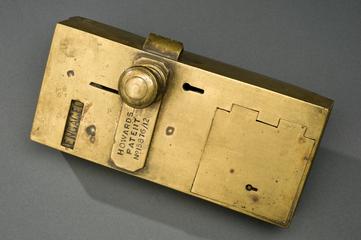
“Cherry picker layout” for use with a Biomek robot at a COVID-19 testing centre




“Milton Keynes Cherry Picking” layout for use with Biomek i5/i7, used during RNA extraction of samples at Cambridge COVID-19 Test Centre, based at the Anne McLaren Building on the University of Cambridge Biomedical Campus, April 2020 - April 2021
14 robots speeded up the testing rate by six times at the Cambridge COVID-19 Test Centre. The Biomek i5 and i7 are automated workstations to handle high amounts of samples. New software instructions, specific to COVID-19, were needed. The diagram shows how plates holding the samples should be loaded for the robot to do its job. Cherry picking means that positive COVID-19 results are selected and sent for further testing to see what type of variant the sample has.
COVID-19 sample testing includes several steps. Each sample is heat treated so it is safe for people to handle. Sample preparation was where every vial was assessed to make sure it is safe and suitable for analysis. This includes adding QR codes to track the sample through the system and barcodes. The team pipette each sample into a well-plate before adding a chemical that neutralises the virus. Finally, the samples are put into a 65-degree oven for 10 minutes – this deactivates the virus so that it is no longer harmful but can still be detected from the PCR test. Automation or robot helpers are also used to speed up the process. The RNA team prepare the reagents needed and set up the robots. The result is a further plate of purified RNA samples, which can be converted to DNA, in a process called ‘reverse transcription’. Only DNA can be copied or amplified. RT-PCR (Real-time Polymerase Chain Reaction) amplifies genetic material which means if the virus is present, it can be detected. A data analysis team then looks at the results and confirms them. Finally, the anonymous test results are sent back to the NHS who will pass these onto to people and then contact tracing would start.
Delivered in just five weeks rather than the normal six month fit out for a testing laboratory the Cambridge COVID-19 Test Centre tested 3 million samples. The Test Centre was originally a collaboration between the University of Cambridge, AstraZeneca, and GSK, staffed by volunteers from the three sites, many of leaving their studies or roles for a few months, or taking on additional jobs. Staff worked in shift patterns in the same role to prevent the spread of COVID-19. In June 2020, the testing centre transition to a directly employed workforce, rather than relying on volunteers. The laboratory was run by Charles River Laboratories with 200 staff.
Details
- Category:
- Public Health & Hygiene
- Object Number:
- 2022-72/55
- Materials:
- paper
- Measurements:
-
overall: 100 mm x 100 mm
- type:
- instructions



